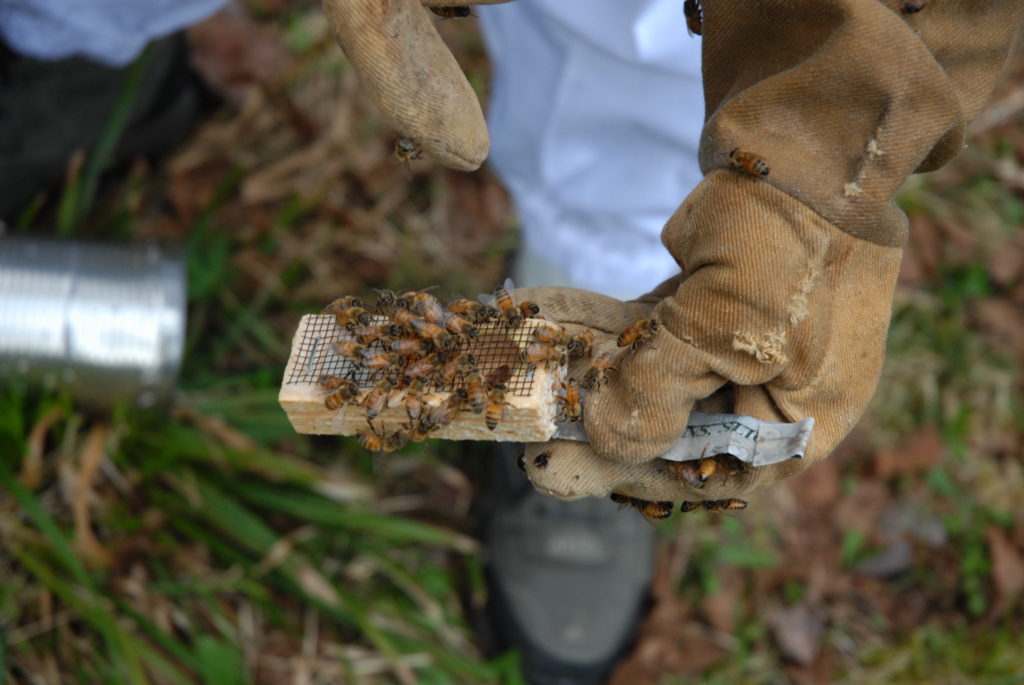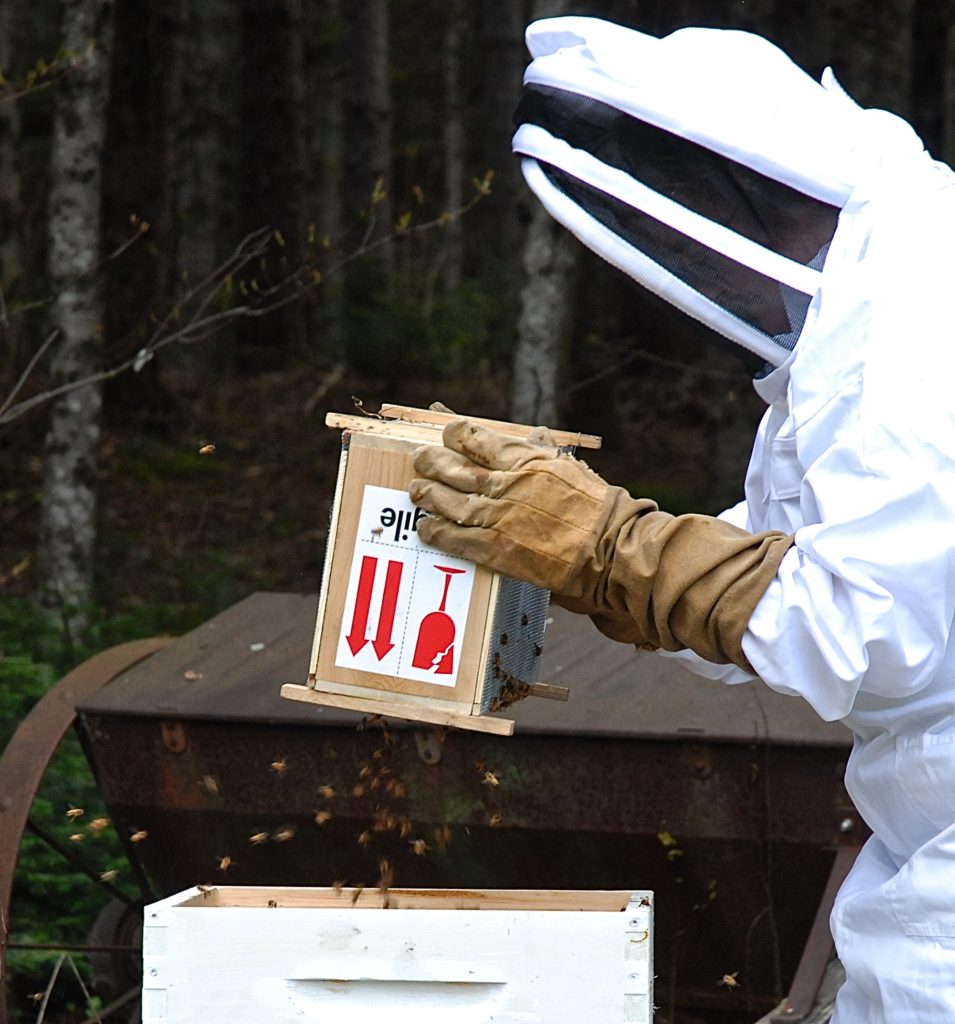Before the bee packets arrive, prepare for your beehive
April’s spring showers bring the May flowers and May brings the packaged honey bees that will pollinate and feed on those blooms. Starting in May postal carriers and delivery drivers around the country will begin dropping off packages containing thousands of female worker bees and one queen to anxious beekeepers who’d ordered them early this year.
For those bees, it’s a transition going from their home colonies to new beehives that can be hundreds of miles and several climate zones away.
For the beekeeper, welcoming these new bees is one of the most exciting times of the year. It’s also a time when, as a responsible beekeeper, you want to have everything ready when they are dropped off.
How do packaged bees travel?
Packaged bees are sold by weight, typically in 1- 2- or 3-pound packages that can contain 3,000, 8,000 or 10,000 bees, respectively.

Your bees make the trip from origin to your hives in special wooden boxes that have screened sides that allow ventilation. This is important as it keeps the bees inside the box from overheating in transit. Inside this box is a much smaller box with a screen on one side that contains the queen.
Also inside the package is a can of simple syrup, suspended from the top of the box and with a hole just large enough for the bees to drink from but not so large that it leaks all over during shipping.
The bees will feed on this syrup and will feed the queen through the screen in her private quarters.
Your box will be buzzing when it arrives and there may be a few bees clinging to the outside. Don’t worry — no one has escaped. These are known as “vagabonds” that hitched a ride from the originating colony.
What do I need to have ready for the bees?
Your bees will have lived on the simple syrup in that can during travel, but it will likely be empty or near empty when they arrive. It’s important to start feeding them immediately.
Prepare a simple syrup solution by combining equal parts sugar and water and boiling until the sugar is dissolved. This can be stored in the refrigerator for several days [I used mason jars] but must be brought to room temperature before feeding it to the bees.
When I first bring my bees home, I bring them right into my kitchen and set them on the counter. Then I fill a new, unused plastic spray bottle with the sugar syrup and gently spray it on to the package screen. If you don’t want a sticky mess on your counter, I recommend placing a large towel under the bee package.
Your bees can remain in the box for up to a week with regular feedings several times a day. At some point any vagabonds will likely fly off, or you can gently brush them off the package before you bring it inside if they bother you or if you are worried about getting stung.
You should have already selected a site for their hive. Ideally the site should get morning sun, be protected from the wind, flat and be close to water. If the location is sloped or in anyway not level, you need to take the time to shim your hive so it is level. Bees hate slanted or tilting hives.
A standard beehive is made up of a series of stacked boxes called “supers.” Each super contains a series of frames. It is on these frames that the bees will do everything from raising the young to producing and storing honey.
Hives can be purchased assembled or in pieces and put together yourself. I really enjoy building hives and frames during the winter months and, trust me, if I can do it, so can you. Either way, they should be constructed, set in place and ready to go before the bees arrive.
How do I put the bees into the beehive?

On moving day, bring your package of bees out to the beehive. Remove the hive’s lid and inner cover and take three or four frames out of the top super. Set those frames aside for the time being.
Take the package of bees and give it a good shake or solid tap on the ground. This will knock the bees to the bottom of the package. Quickly remove that now-empty sugar syrup can revealing a circular opening in the package.
Invert the package over the top of the open hive and shake the bees out. They will fall into the hive and quickly go about their business. Some may start buzzing around, but if you keep your moves deliberate and methodical, they should not bother you. I have done this numerous times and have yet to be stung.
When all the bees are out of the package, remove the queen’s small box. If it does not come off when you take it out of the hive, peel away the metal strip that covers a “cork” made of sugar.
Carefully replace the frames you removed earlier and suspend the queen’s box between two frames with the cork facing down. Over the course of the next few days the worker bees will eat through that sugar cork, allowing the queen to exit and take her place in the center of the hive.
Replace the hive inner cover and lid and take a moment to congratulate yourself on safely moving your new tenants into their hive.
Depending on what — if anything — is in bloom and producing pollen when your bees arrive, you may need to give them supplemental food until they can gather enough from nature on their own.
Using a hive-top feeder is the easiest way to feed bees. At its simplest, the feeder is a small platform on which a mason jar filled with a simple syrup is placed. The lid of the mason jars should have small holes through which the bees can access the food. You can puncture your own holes using the tip of a nail.
Be sure the holes are small enough so the syrup does not pour out on its own, but large enough so the bees can drink from them. Also make sure you puncture the lid from the outside in, so any metal points on the led face inwards and away from the bees. You don’t want them cutting themselves.
Place the feeder inside a frameless super on top of the hive and place the hive inner cover and lid over that. The bees will come out of their frames to feed on the sugar syrup.
Then dream of the honey harvest that will come in the fall.
